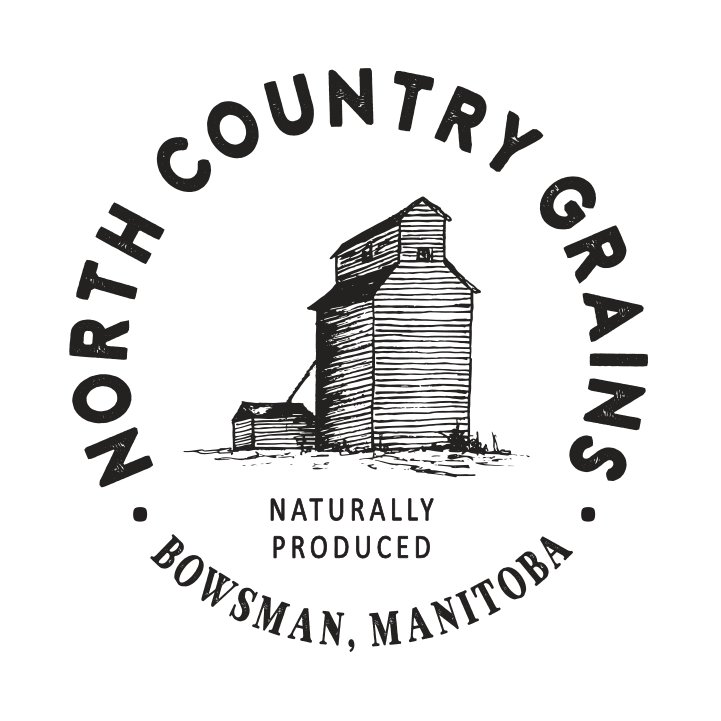Baking with Whole Grain Flour
Our whole grain wheat flour is made from high protein wheat, making it ideal for bread making. It can also be used to make pancakes, waffles, pizza crust, pastas, cookies, muffins or other dense baked goods.
Here are some helpful answers to our most asked questions when it comes to baking with whole grain flour.
Can I substitute whole grain flour for white flour in my recipes?
Yes, but it will take some time experimenting with substitution. A good tip is to start substituting with 1/2 whole grain and 1/2 white flour. You may need to add a little more or a little less flour when substituting 100% whole grain flour. Because, whole grain flour absorbs more liquid than all-purpose flour, you may need to increase the liquid in a recipe when making substitution.
The end result will be a darker colour, with a more pronounced flavour, and possibly less volume is a result of an enzyme in the bran that reduces elasticity in gluten.
Gluten provides yeast bread’s structure to rise and stay risen. Vital Wheat Gluten provides the extra gluten needed to make whole grain loaves rise to their highest potential. Try adding 1 tablespoon of Vital Wheat Gluten per cup of flour in your bread recipe and see the difference it makes! You can find this in the baking isle at most grocery stores.
Is your whole grain bread collapsing?
A number of things can be happening:
a) too low of oven temp. Oven needs to be heated high enough so that when the bread starts to rise in the oven it will bake quickly to retain its shape.
b) Over proofing – cut back on the rise time
c) Under – kneading – whole grain flour takes more kneading to properly develop gluten.
Is there a way to make the taste of whole grain flour less intense?
If the flavour of whole grain is too strong for you in your recipe, try substituting orange juice for two tablespoons of the liquid (water, milk) in a recipe.
Why is my whole grain dough turn out too dry?
Avoid adding extra whole grain flour to whole grain yeast bread dough in an attempt to make it it smooth and supple as white bread dough. The bran and germ in the whole grain keep the dough slightly tacky. Adding more flour will make the bread dry and heavy. To make the dough easier to handle, lightly oil hands instead of adding flour. Also keep in mind that whole grain flours absorb more liquid than white flour, but they do so at a slower rate. So as the dough rests it will absorb any extra liquid.

Hi Amy,
I’m a friend of Wendy and Andre.
I have experimented with your flour and am enjoying knowing how healthy it is. We put my son on a glueten free diet in the past hoping to remove his consistent headaches. But I think it is more like all the glutamate and other awful additives that may be the culprit. So therefore I’m trying real hard to feed my family as healthy as I can. Sure takes a lot of time.
Just bought more of your flour and am experimenting with making tortillas. The family will try tonight. (Yikes). I used 3 cups of your flour, 1 teaspoon salt, 1 teaspoon baking power, 1/3 cup of olive oil and 1 cup of warm water.
This recipe made 16 small tortillas. Any suggestions of I could make it so that it would be easier to fold without breaking (just like it does in store bought ones) would be greatly appreciated.
Also have a friend that is interested in ordering a bag of flour. Which way would be the best way in ordering this flour. I don’t want to become a pest to Wendy and Andre. I will continue to share my great findings with friends of mine.
Also, could you tell me how long will the flour last in my pantry?
From time to time when I am experiencing new recipes, would it be ok with you if I email you for some advice?
Look forward to hearing from you.
Regards
Nicole